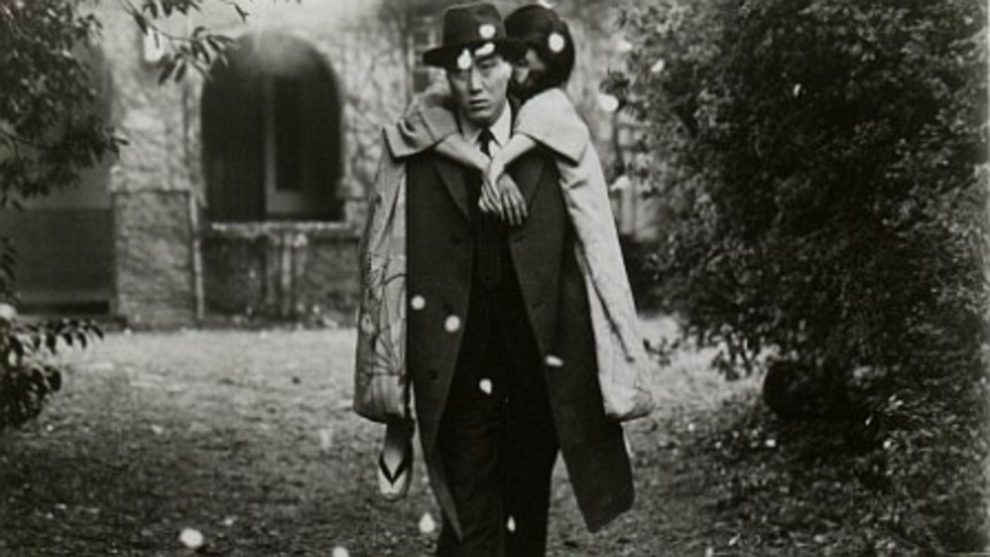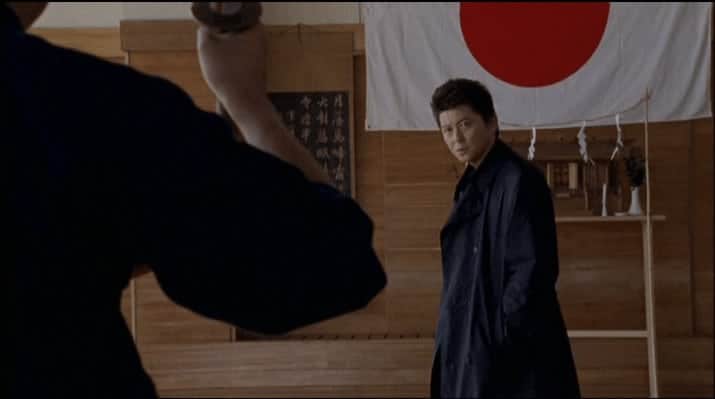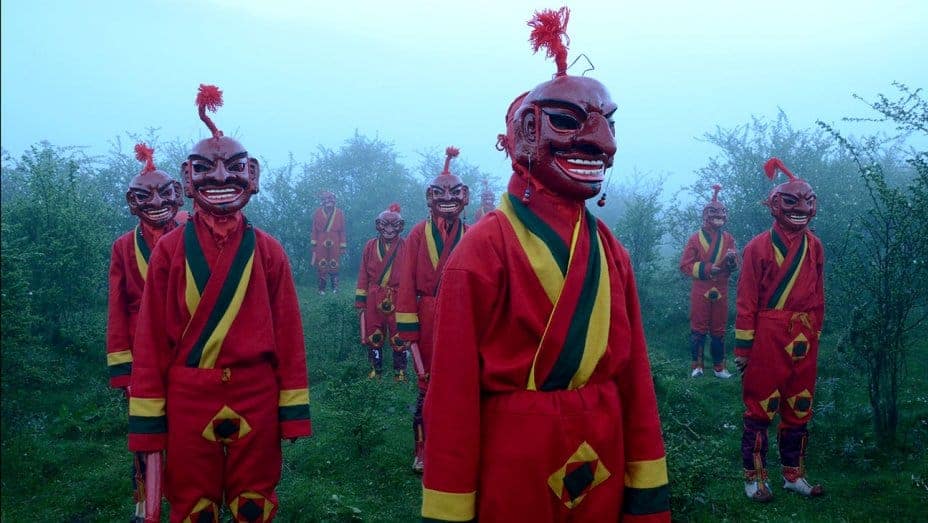Creating a film that looks like a silent one but actually is not and having a narrative that is a pastiche of elements that includes tribute to the film noir of the 1920s, comedy, and a repeated breaking of the fourth wall is not exactly an easy task. However, this is exactly what Kaizo Hayashi accomplished with “To Sleep so as to Dream”, in an effort that netted him awards from Mainichi Film Concours and Yokohama Film Festival (also for Takeo Kimura's art direction).
The story takes place somewhere in the 50s, and revolves around the disappearance of Bellflower, the daughter of Madame Cherrysblossom, an aging silent film actress. The Madame tasks her elderly butler with finding her, and he gives the job to two detectives, egg-swallowing Uotsuka and his assistant, Kobayashi, who soon proves to be a master of martial arts apart from constantly aloof. The trio is immediately contacted by the kidnappers, an organization self-called M. Pathe and Co (in a direct reference to one of the first film studios in Japan), who asks the two detectives to solve a riddle in order to find the whereabouts of the girl. After much thought and huge sums of money offered to the kidnappers, the two finally solve the riddle, only to find that this was just the beginning of a very dangerous game, that also features three magicians and a number of goons. Despite Kobayashi's efforts, Uotsuka gets repeatedly beaten, the family has to offer more bricks of money (literally) while the search eventually brings the duo to a circus performance including the screening of a silent movie with a benshi, just before the fourth wall gets completely torn down and the film turns to something very similar to “Millennium Actress“.
Kaizo Hayashi, who was just 29 at the time the film was released, creates a world where co-existence is the rule. The silent film co-exists with the talkie, reality with fantasy, and the past with the present. The way he achieves that is ingenious, as the sources of this approach are both small details and the overall setting. The sounds of phones ringing while the actors remain silent is a distinct sample, as much as the fact that the benshi and a director that appears later are the only two individuals who actually speak for the whole time they are on screen. The black-and-white image points towards the past, but the prowess in the production values, starting with Takeo Kimura's art direction and concluding with Yuichi Nagata's cinematography, capture the many locations the story takes place with distinct artfulness that points to the (then) present.
Furthermore, the noir aesthetics as mirrored both in the two detectives and the magician villains add much to the entertainment offered here and are also excellently portrayed, with Shiro Sano as Uotsuka and Koji Otake as Kobayashi performing in perfect resonance to the film's silent aesthetics. Morio Agata, Akira Oizumi and Kazunari Ozasa are also great as the three magicians, with their overall demeanor giving a cult essence to the title, much similar to that of Seijun Suzuki in films like “Branded to Kill“. Fujiko Fukamizu's presence in the role of Madame Cherrysblossom also adds to the blurring of reality since she was an actual actress of the silent era, who did not appear on film for more than 40 years until “To Sleep so as to Dream”. The references to the past of Japanese cinema, with the benshi (Shunsui Matsuda, an actual benshi), M. Pathe, the Cinema Control Act and the screening of a silent ninja movie in the film also work extremely well, also inducing the movie with a sense of nostalgia. Lastly, the realization of the two detectives regarding what is going on (which actually happens in three dimensions: reality, inside a mind and inside a movie) adds another level to the story, which lingers between the surrealistic and the delirious.
“To Sleep so as to Dream” is an excellent film, which works equally well as a tribute to silent cinema and the beginning of the Japanese movie industry, a mash-up of genres, and as a compact, separate entity.















